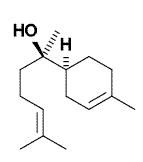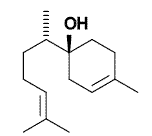Make your skin feel & look good
Do you let off a static charge when reaching for a door knob? Does your face feel as though it could crack every time you laugh or smile? Do the backs of your hands look like miniature roadmaps? Even if you never saw a single snowflake this season, or felt the cold wind of winter's embrace, you can be sure that these symptoms are clear signs that winter's skin hazards have, indeed, arrived.
Dry skin results from a loss of moisture, due in part to lower humidity attributed to colder temperatures. The less humidity there is, the greater the rate that moisture evaporates from the skin. But, indoor heating, exposure to wind, sun, and water, and environmental toxins play a role in robbing your skin of moisture, too.
What's your best line of defense? Moisturizing creams and lotions that not only add much-needed moisture but that are designed to keep moisture where you want it -- on your skin.
Skin 101
The skin is the largest single organ of the body, weighing in at an average of nine pounds and containing about 19 million cells per square inch. While the skin is composed of several layers, moisture retention and cell renewal occur in the two uppermost layers: the dermis and the epidermis. Sandwiched between these two layers is the dermal-epidermal junction that contains the basal cells that generate new cell growth. Once they reach maturity, the basal cells divide and make their way to the skin surface to replace older cells.
There is another layer of cells between the basal cells and the keratin-rich epidermis known as spiny cells. These cells are fed elastin, collagen, and hyaluronic acid from the dermis and their function is to filter out impurities and to provide a smooth appearance. In healthy skin, spiny cells are closely knit to each other, giving the skin elasticity. But, as skin ages, this bonding begins to break down and results in sagging, wrinkling, and dryness.
The skin is more than just an outer suit for the body; it is a living sponge that serves as a gateway to the rest of the organs. Moisturizers keep the skin in good working order in two ways. First, they form a barrier to prevent water loss. Second, they utilize humectants, such as glycerin and lactic acid, to draw moisture from the underlying layer up to the surface.
Natural Chemistry
Moisturizing lotions and creams contain anywhere from 60-90 percent water. But, do you know what else is in your moisturizer? Here's a rundown of some common ingredients and what's good -- and not so good -- about them.
Mineral oil and petroleum products: These substances do give a feeling of added moisture, but only because they provide a slick, oily base. The truth is, these products clog pores and deprive skin cells of oxygen needed for normal metabolism and new cell growth.
Lanolin: This common ingredient is found in most mainstream moisturizers, and some natural ones. It is used to protect the skin and keep it moisturized; however, many people are allergic to it. If your moisturizing lotion or cream is giving you a rash or causing skin eruptions, lanolin could be the culprit. Lanolin is derived from sheep's wool, so it may transport pesticides, unless it's taken from sheep raised on an organic farm.
Kaolin and Betonite: These are fine powders used in a variety of cosmetics that help to bind ingredients, but deplete the skin of water and oxygen in the bargain. Both of these agents are used to suffocate forest fires. Enough said.
Lauramide DEA: This is a semi-synthetic substance used as a thickening substance and to encourage lather. It has also been found to invite allergic reactions.
Sodium Laurel Sulfate and Sodium Laureth Sulfate: There is much controversy surrounding these substances. They are used in many health and beauty products as foaming agents, improving the texture and consistency of many products. However, some experts warn that they are at the very least, irritating to the skin, and, at worst, linked to various cancers, vision disorders, hair loss, and allergic reactions.
Propylene Glycol: This substance is usually found among the first few ingredients in many moisturizers, often listed right after water. This ingredient is controversial, too. Many natural products do contain it, but in small amounts since many raw materials use it as a solvent. However, it is a common skin allergen, so do be on the lookout for reactions if you're using any products which contain it..
Now that you know which ingredients to use cautiously, take a deep breath and meet some more friendly moisturizing ingredients.
Yeast Cell Wall Extract (beta 1,3-D glucan): One of the best humectants available. It effectively minimizes fine lines, especially around the sensitive eye area.
Fractionated Hyaluronic Acid: A low-molecular weight compound that retains moisture and improves elasticity. Occurring naturally in human skin, hyaluronic acid absorbs up to 1,000 times its weight in water.
Rose Hip Oil: Replenishes lipids and reduces fine lines.
Wheat Germ Oil: A rich source of vitamin E offering antioxidant properties, especially for sun-damaged skin.
Chamomile: A source of levomenol, a natural moisturizer that improves texture and elasticity.
Green Tea: Contains antioxidant compounds, catechins, and protects against UV damage.
Collagen/Elastin: Low-molecular weight agents that nourish, soften, and improve cell metabolism.
Panthenol: A pro-vitamin B derivative that retains moisture and reduces wrinkles and fine lines.
Aloe vera: Aloe's polysaccharides retain water and encourage cell repair and new cell growth.
Citrus Seed Extract and Vitamins A, C, and E: Natural preservatives with antioxidant value that improve texture and stimulate new cell growth.
Cocoa Oil and Cocoa Butter: Provide stearic acid, a natural fatty acid that softens and improves texture.
Horsetail extract: A rich source of silica, a basic component of hair, skin, and nails.
Glycerin: Seals in moisture and adds softness.
Sweet Almond Oil: Easily absorbed, smoothes and softens skin.
Moisturize From the Inside
While moisturizers are doing their job on the outside of your skin, there are certain dietary measures that you can take to make a difference from the inside. B vitamins, for example, are essential for building protein and to generate new skin cells. They are also involved in the production of glycogen by the liver, a substance that aids in toxin elimination and the sloughing of dead skin cells. Vitamin A is a powerful antioxidant that checks damage caused by free radicals and enables the skin to retain moisture. Another antioxidant vitamin -- vitamin E -- is necessary for cell renewal, as is the mineral silica. Essential fatty acids are needed to produce sebum, your skin's own natural protective oil, and zinc promotes the production of collagen that gives skin its elasticity.
A diet rich in plenty of fresh fruits and vegetables will help you meet these vitamin and mineral requirements. And a good multi-vitamin offers additional insurance.
So there you have it -- choose the right moisturizer and use it faithfully, eat well, and hydrate -- your skin will thank you.
REFERENCE
Quatrochi, Kathyln. The Skin Care Book: Simple Herbal Recipes. Loveland, CO: Interweave, 1997.
Winter, Ruth. A Consumers Dictionary of Cosmetic Ingredients. New York, NY: Crown, 1994.
RELATED ARTICLE: Simple steps to keep skin moisturized and healthy
* Avoid using very hot water when bathing or doing dishes. In addition, use vegetable-based soaps in the kitchen and bath; they're much kinder to your skin than harsh detergents or soaps.
* Cover exposed skin when spending time outdoors in the winter. Hats, which help to retain body heat lost through the top of your head, scarves, and gloves will keep you warmer and reduce chapping caused by wind.
* Protect your skin from the sun with a hat and a moisturizer that contains a sunscreen of at least SPF 15.
* The perfect humidity for normal skin is about 35 percent, but air-conditioning and arid indoor heat alters humidity considerably. Use a humidifier in your home or office, or simply set pans of water on a radiator.
* One of the best and easiest ways to ensure that your skin gets plenty of moisture is to drink enough water -- a minimum of 8 purified glasses each day, and more if you've been exercising.
* Wear a protective lip balm when outdoors to prevent damage from wind and sun.
RELATED ARTICLE: What's out there
Camocare Gold Cream with Topical Ester-C -- Two versions of this product are available, one for day and one for night time. Both are designed to help to improve the skin's texture and to firm it.
Derma E Ginseng/Collagen Firming Creme -- This moisturizing cream works well for all skin types. Its ingredients include stearic acid, aloe vera gel, sesame seed oil, Korean ginseng, and topical vitamins A, E, and D.
Jason Natural Cosmetics Mango Butter -- This all-over body lotion is said to "seal in moisture," and help to soften and protect dry skin.
Zia Essential Body Moisturizer -- This glycerin-based moisturizer is designed to help all skin types. It features shea butter, panthenol, aloe vera gel, and the essential oils of sandalwood, ylang ylang, and grapefruit seed extract.
Karyn Siegel-Maier is a freelance writer who specializes in herbs, alternative medicine, and new-age issues. She is the author of The Naturally Clean Home: 121 Safe and Easy Herbal Formulas for Non-Toxic Cleansers (Storey Books/Dec. 1999).
COPYRIGHT 2000 PRIMEDIA Intertec, a PRIMEDIA Company. All Rights Reserved.
COPYRIGHT 2000 Gale Group




